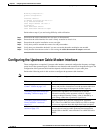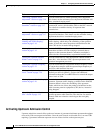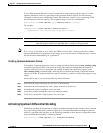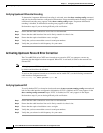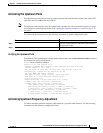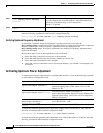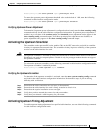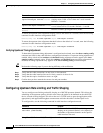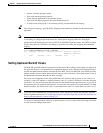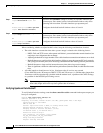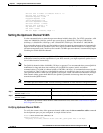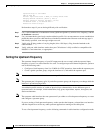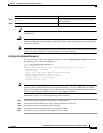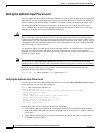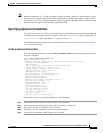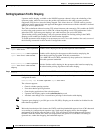
3-19
Cisco uBR7200 Series Universal Broadband Router Software Configuration Guide
OL-2239-03
Chapter3 Configuring Cable Modem Interface Features
Configuring the Upstream Cable Modem Interface
• Generic calendar queuing routines
• New token bucket policing function
• Grant shaping application of the calendar queues
• Upstream rate shaping option to the token-bucket keyword
• A default state change from 1second burst policing to token-bucket with shaping
Tip Upstream grant shaping is per CM (SID). Shaping can be enabled or disabled for the token-bucket
algorithm.
Note Before the introduction of this feature, the CMTS would drop bandwidth requests from a CM it detected
as exceeding its configured peak upstream rate. Such request dropping affects the throughput
performance of IP-based protocols such as FTP, TCP, and SMTP. With this feature, the CMTS can shape
(buffer) the grants for a CM that is exceeding its upstream rate, rather than dropping the bandwidth
requests.
Router# show interface c3/0 sid 1 counters
Sid Inpackets Inoctets Outpackets Outoctets Ratelimit Ratelimit
BWReqDrop DSPktDrop
1 67859 99158800 67570 98734862 2579 0
Setting Upstream Backoff Values
The DOCSIS-specified method of contention resolution for CMs wanting to transmit data or requests on
the upstream channel is a truncated binary exponential backoff value, with the initial backoff window
and the maximum backoff window controlled by the CMTS. The CiscouBR7200series CMTS specifies
backoff window values for both data and initial ranging, and sends these values downstream as part of
the Bandwidth Allocation Map (MAP) MAC message.
The values are configurable on the CiscouBR7200series software and are power-of-two values. For
example, a value of 4 indicates a window between 0 and 15; a value of 10 indicates a window between
0 and 1023. You can set fixed start and end values for data backoff on the upstream ports, or you can set
the upstream ports for automatic data backoff. You have the same options for ranging backoff. For both
backoff windows, the default start value is 0; the default end value is 4. Valid values are from 0 to 15.
Note Cisco does not recommend that you adjust default values, but that you enable the automatic dynamic
backoff algorithm. Refer to the “Configuring Dynamic Contention Algorithms (Cable Insertion Interval,
Range, and Data Backoff)” section on page5-6.
To set data or ranging backoff values for an upstream port, use one or more of the following commands
in cable interface configuration mode.



